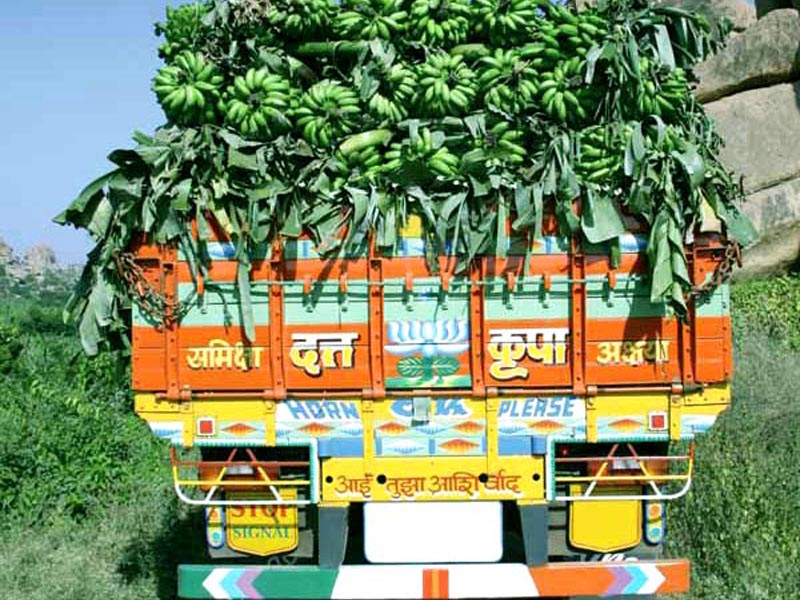India’s Banana Appetite
India’s Banana Appetite

Bananas gets their name from the Arabic word for finger. But India is the fruit’s birth place and also claims to be the world’s largest banana producer and consumer. In spiritual India, the banana is the holiest fruit. No religious ceremony or social ceremony in India is complete without serving the fruit to the gods and devotees. The world’s most consumed fruit, banana has been grown in the subcontinent from the Vedic times. The earliest written references on bananas occur in Sanskrit and Buddhist texts dating back to 500BC. According to legend, Alexander the Great was the first European to discover the taste of bananas during his invasion of India.
India contributed 22 percent of the global production of bananas and plantains in 2011-2012, according to the country’s National Horticultural Board (NHB). Yet when it comes to global trade, the country is a bit player with a puny 0.02 percent share of the market. The last couple of years were particularly bad for banana exports, which fell steeply due to low prices in international markets, according to the New Delhi – based Confederation of Indian Industry (CII), the largest Indian business body. CII has now formulated a comprehensive plan to increase banana exports at the moment worth US$ 5 million to US$ 1.2 billion by 2020. The business group has also worked out details to brand bananas in the global market along the lines of California Apples or Florida Oranges.
The past two decades has witnessed a quantum jump in India’s banana production from less than 10 million tons in 1991-92 to 27 million tons in 2012-13. According to the National Research Centre for Bananas (NRCB) in Tamil Nadu State – the country’s banana bowl – production has risen by 245 percent in the past 20 years. Bananas have become the country’s number one fruit racing past mangoes. The fruit makes up 32 percent of the country’s total fruit production. Sixty percent of the world’s banana production comes from Asia with India accounting for 48 percent and 36 percent of the area cultivated. Banana production significantly rose in the past two decades in both India and China.
Thirty Varieties
India is also the world’s largest producer of all fruit, with output at 76.42 million tons from 0.76 million hectares of land under cultivation in 2012-13, according to the government- backed Agricultural & Processed Food Export Development Authority ( APEDA). The banana boom in the country has been attributed to the growth of cultivated land, the adoption of new production technologies and the use of high yielding varieties. The area under cultivation increased by 100 percent from about 0.4 million to nearly 0.8 million hectares in the past decade. India is home to about 30 varieties of bananas and plantains with the Dwarf Cavendish leading the pack. In 2012, Tamil Nadu, the South Indian state, was the country’s largest producer with output of 6,667 tons followed by Maharashtra and Gujarat in the west.
But the banana is conspicuous by one factor: its insignificant contribution to India’s external trade. Most of the fruit is used for domestic consumption as a table dessert fruit as well as for cooking. Banana production and trade are dominated by the disorganized private sector with the marketing chain from the farm to the consumer long and linked through various intermediaries.
The Indian export of bananas came to just 0.03 million tons in 2011-12 forming barely 0.02 percent of the world trade of 90.70 million tons, according to CII. Exports fell steeply between 2011 and 2012 due to low prices in international markets – 21,525 metric tons netted a revenue of only US$ 5.4 million. In the previous year, the country exported 34,711 tons valued at US$16 million, with major destinations the United Arab Emirates, Saudi Arabia, Iran, Kuwait, Bahrain, Qatar, Nepal, the Maldives and South Korea. The U.S, the European Union and Japan import most of the world’s bananas, but these markets are mostly dominated by South American countries.
The fact that none of these big markets figure in India’s exporting destinations holds one key to why the country’s imports remain low.
According to CII, the main reason for India’s poor show as an exporter is a disorganized agricultural sector that often faces huge post-harvest losses due to a lack of good supply chain facilities and warehousing. A recent report by Emerson Climate Technologies India says 18 percent of India’s food and vegetable production, worth more than US$ 2 billion, is wasted each year due mainly to poor refrigerated transport and inadequate cold storage facilities.
Currently, India has 6,300 cold storage facilities with an installed capacity of 30.11 million tonnes unevenly spread across the country. This is half the amount that India actually needs, according to CII. Cold storage capacity for all food products in the country should be more than 61 million tonnes which would require an investment of more than US$ 8 billion by 2015-2016.
The NRCB too has formulated Vision 2020 for the Indian banana industry by which production, productivity and export of bananas are to be increased manifold.